
Feel free to add tags, names, dates or anything you are looking for
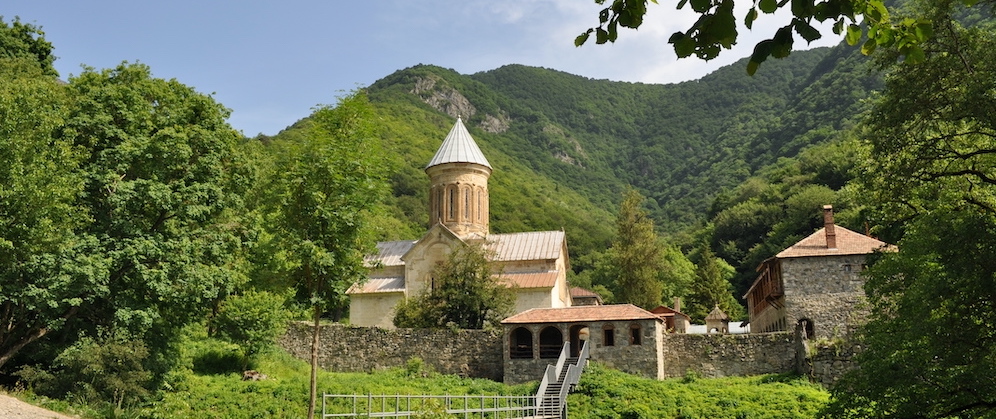

Kvatakhevi Monastery is located in the province of Shida Kartli, deep in the Kavtura River Gorge, far from any towns or villages. The monastic buildings occupy a plot of land that lies between forest covered mountains.
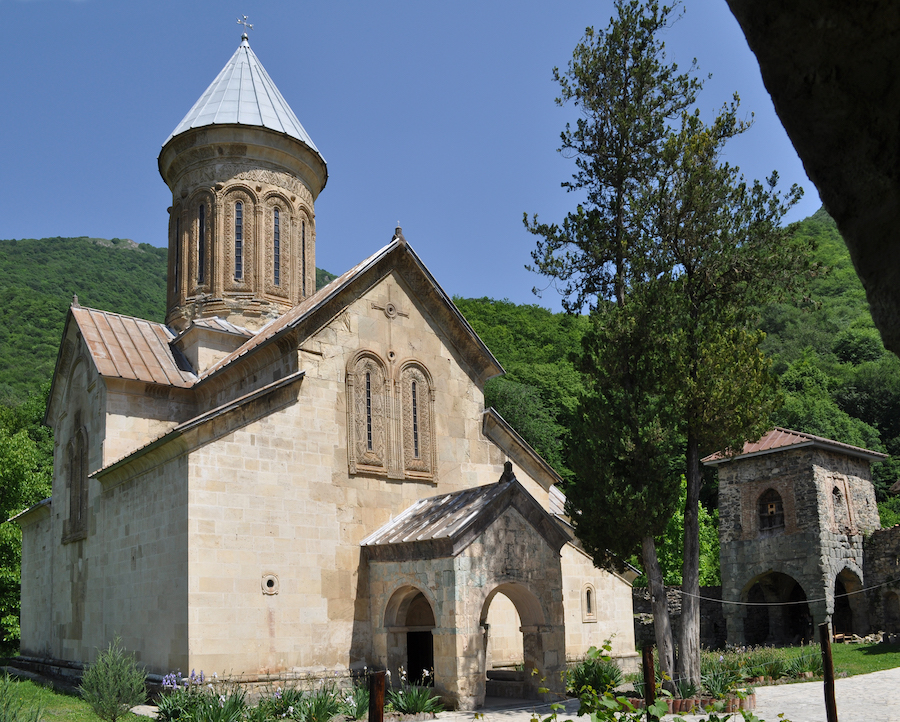
The Church of the Mother of God viewed from the North-West
The main church of the monastery, which is dedicated to the Mother of God, was built around 1200 and is considered to represent one of the best examples of Georgian architecture from the Epoch of Queen Tamar. It has an inscribed-cross floor plan, with a dome resting on the corners of the apse walls to the east, and two octagonal piers to the west. The façades are faced with fine ashlar, while the interior facing is inferior since it was intended for being plastered and painted.
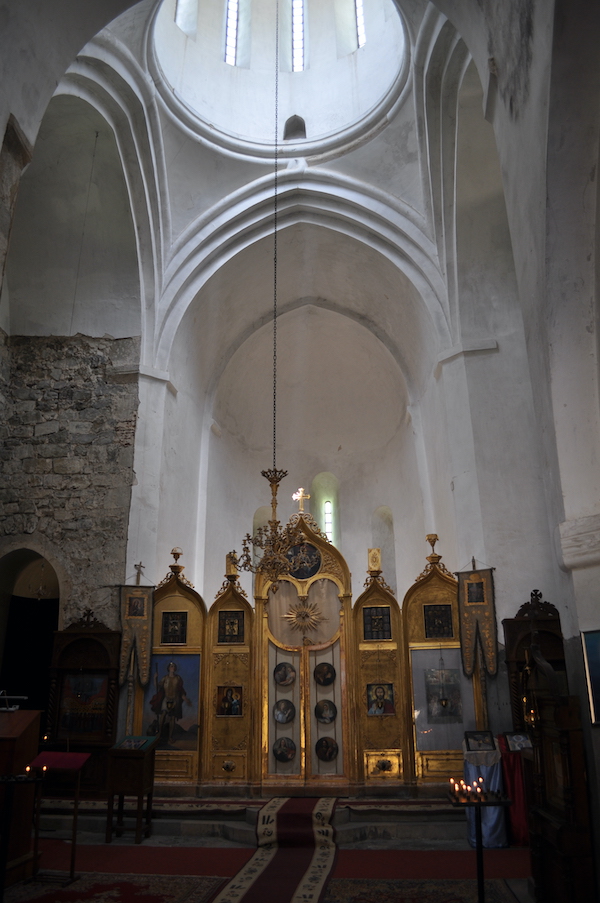
Interior of the Church of the Mother of God
Unadorned pendentives serve to transition from the square central bay to the circular base of the dome. The attenuated proportions of the dome’s drum are emphasized by long and narrow windows cut within each of its twelve arched facets. The richly decorated convex frames of the windows fill the entire space within the arches, leaving no undecorated surfaces.
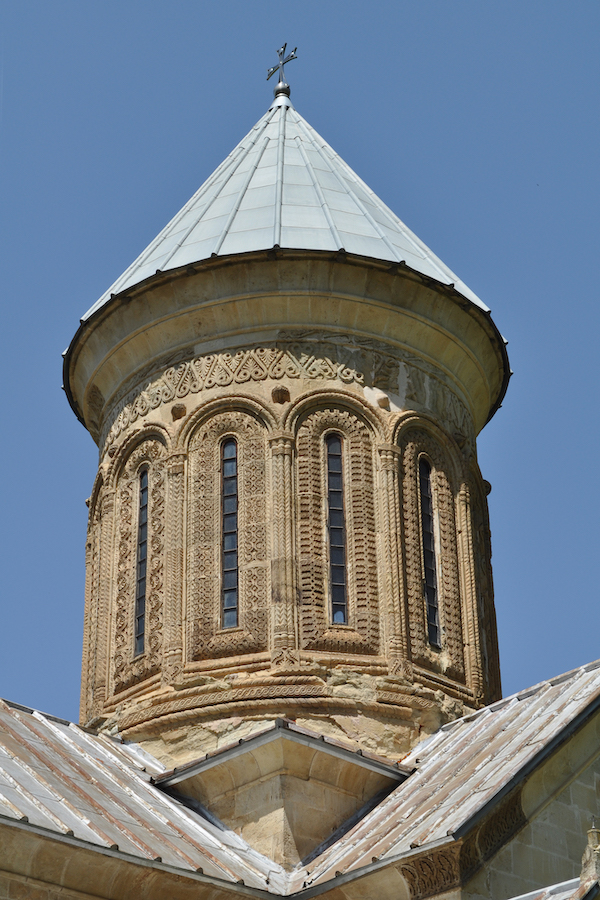
The dome
The design of the east façade replicates that of Samtavisi Cathedral, with an ornamental cross above and two slanted decorative squares below the framed window, but without blind arches.
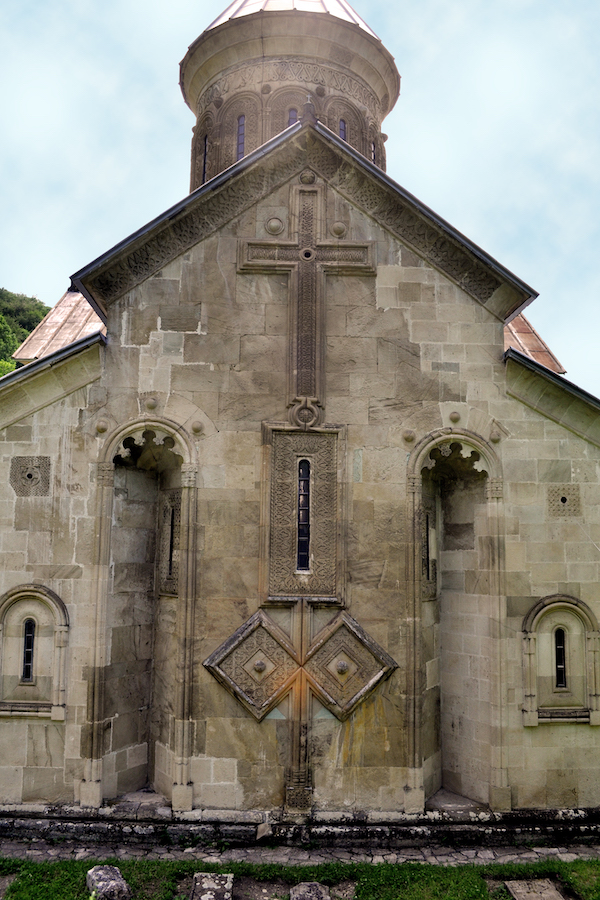
The Eastern façade
The southern chapel is contemporary with the church. The western porch was built in the seventeenth century. The monastic precinct is entered through a large arched porch gate set in the enclosing wall. The tower, refectory and monks’ cells that stand within the precinct date from the late Middle Ages. The five-sided arched belfry in the courtyard was constructed in 1872.
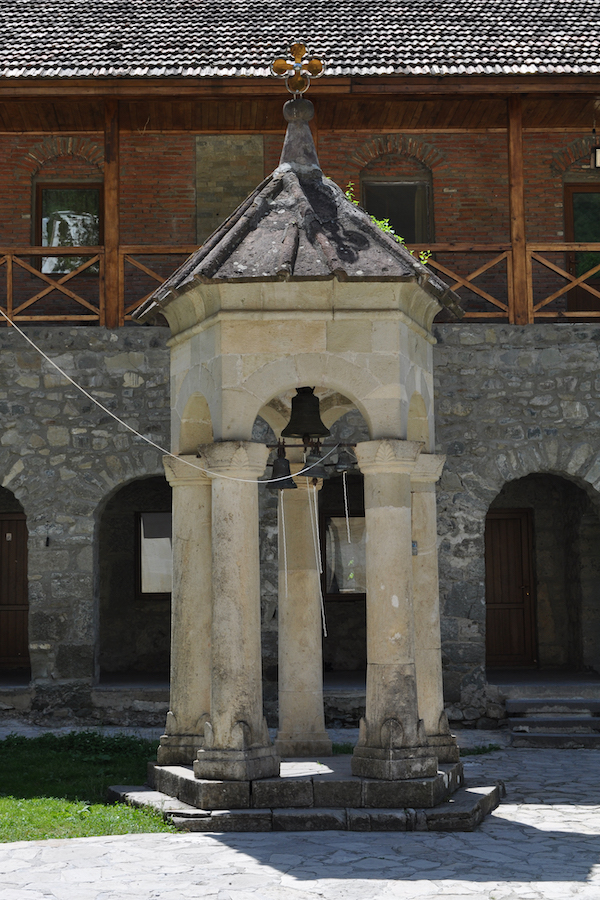
The belfry
Initially, Kvatakhevi was a convent. In 1396, Tamerlane’s marauding troops burned alive dozens of nuns here. It was later converted into a men’s monastery. In the late Middle Ages, Kvatakhevi was one of the richest and most celebrated monasteries in Georgia, but by the nineteenth century it had fallen into decay. In 1854, it was extensively restored by Prince Ioanne Tarkhan-Mouravi, the grandson of the last Georgian King, George XII. A major part of the outer facing of the church dates from that period. The dome was covered with a round roof, which is not typical for Georgian architecture, and in the 1970s it was replaced with a conical one.
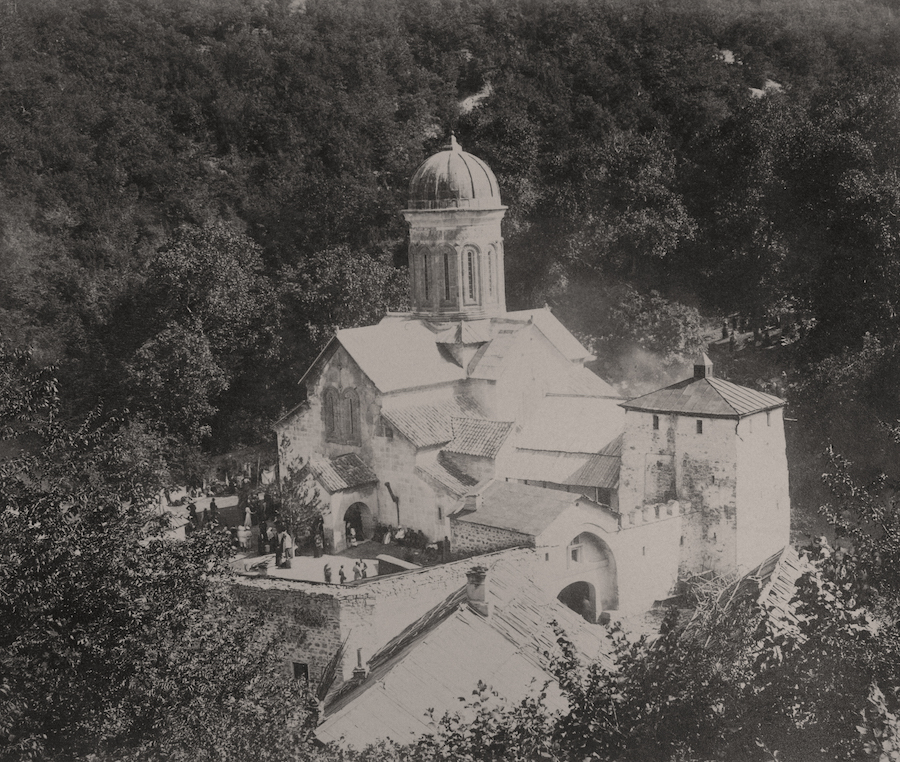
Kvatakhevi Monastery, photographed in the 1890s
Kvatakhevi Monastery retained its high status under Russian church authorities. From 1854 to 1874, the writer and translator Tarasi Aleksi-Meskhishvili served as its archimandrite.
The monastery was active until the Soviet period, and was reopened again in the 1990s as a stauropegion – i.e. a monastery that is directly under the jurisdiction of the Holy Synod.